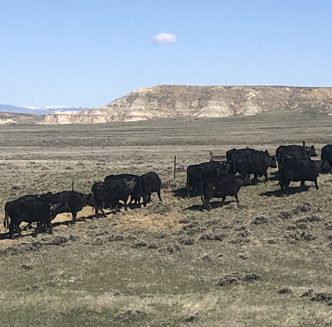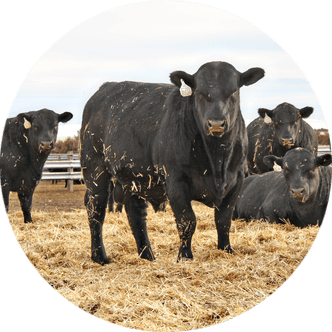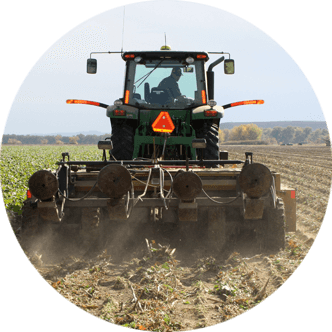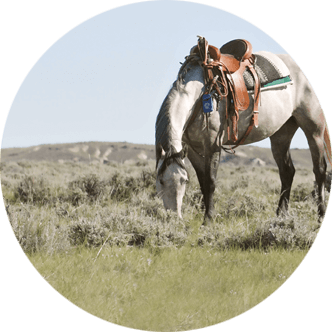Proper use of vaccines effectively decreases illness in calves
When vaccines are used properly, they reduce the number and severity of calves that get sick.
During a March 18 Beef Cattle Research Council (BCRC) podcast, BCRC Science Director Dr. Reynold Bergen discusses the proper use of vaccines.
According to Bergen, vaccines teach calves’ immune systems to recognize particular pathogens so they can respond quickly and effectively if they encounter them in real life.
Immunity
“Calves are born with a completely naive immune system,” Bergen states. “Unlike other species, cows do not pass any immune protection to their offspring during pregnancy. This is why it is crucial for calves to consume at least two liters of high-quality colostrum soon after birth – it helps protect them while their immune system develops.”
The developing immune system of a calf can learn to recognize and respond to disease-causing pathogens in two ways – the hard way, by being exposed to an infectious disease, surviving it and responding more effectively the next time, or via a vaccine.
It is also important to note, revaccinating or boosting further strengthens the immune system.
A recent study by Canadian researchers found vaccination rates among producers are increasing.
According to the researchers, over 85 percent of those in the Canadian Cow/Calf Surveillance Network routinely vaccinate nursing calves against bovine viral disease (BVD).
Additionally, more than 90 percent of producers vaccinate against infectious bovine rhinotracheitis (IBR), bovine respiratory syncytial virus (BRSV) and bovine parainfluenza-3 (PI3).
“This is encouraging news,” Bergen states. “However, it is important to note less than one-half of producers administer booster vaccinations for any of these viruses.”
Proof of concept
To determine how vaccine handling practices, including providing a booster, affected effectiveness in calves, University of Alberta (U of A) Adjunct Professor Nilusha Malmuthuge and Gleise Medieros da Silva, U of A assistant professor and BCRC-Hays chair in beef production systems, completed a proof-of-concept project.
For the project, 150 calves were vaccinated against PI3, BRSV, IBR and BVD types one and two using a commercial five-way modified live viral vaccine at spring processing.
The calves were divided into five experimental groups at weaning. The control group was not boosted, while the other four groups were boosted with the same vaccine, but the vaccine was handled differently.
Bergen reports one treatment was a mixed vaccine kept in a cooler and administered within an hour, while the second treatment was a mixed vaccine kept in a cooler and administered six hours later.
The third treatment was a mixed vaccine kept at room temperature and administered within an hour, and the fourth treatment was a mixed vaccine kept at room temperature for six hours before administration.
According to research, blood samples were collected before the booster vaccinations were given, and a second sample was collected a month afterwards.
The report mentions serum antibody levels and virus neutralization tests were also used to assess whether revaccination and vaccine handling affected the strength of the immune responses.
Outcome
Researchers discovered boosting matters.
“A month after the booster vaccinations were given, all four groups of boosted calves displayed a stronger immune response than the unboosted calves,” Bergen notes.
The team also discovered vaccine handling is important. Some vaccine antigens were less affected by storage temperature and mixing time than others, but vaccine handling methods clearly affected animals’ ability to mount a strong immune response against BVD.
Bergen states, “Six to seven times as many animals failed to generate an immune response to BVD types one and two when mixed vaccines were kept at room temperature for six hours before they were administered compared to when the mixed vaccine was chilled and used within an hour.”
The study also discovered vaccines prepare calves for germs they’ll encounter, allowing calves’ immune systems to “practice” in a safe environment without needing to expose them to the actual pathogen and risk death, illness and reduced growth performance.
According to the study, vaccines do not eliminate disease, but when properly used they can reduce the number of calves getting sick as well as the severity of the illness.
Melissa Anderson is the editor of the Wyoming Livestock Roundup. Send comments on this article to roundup@wylr.net.





